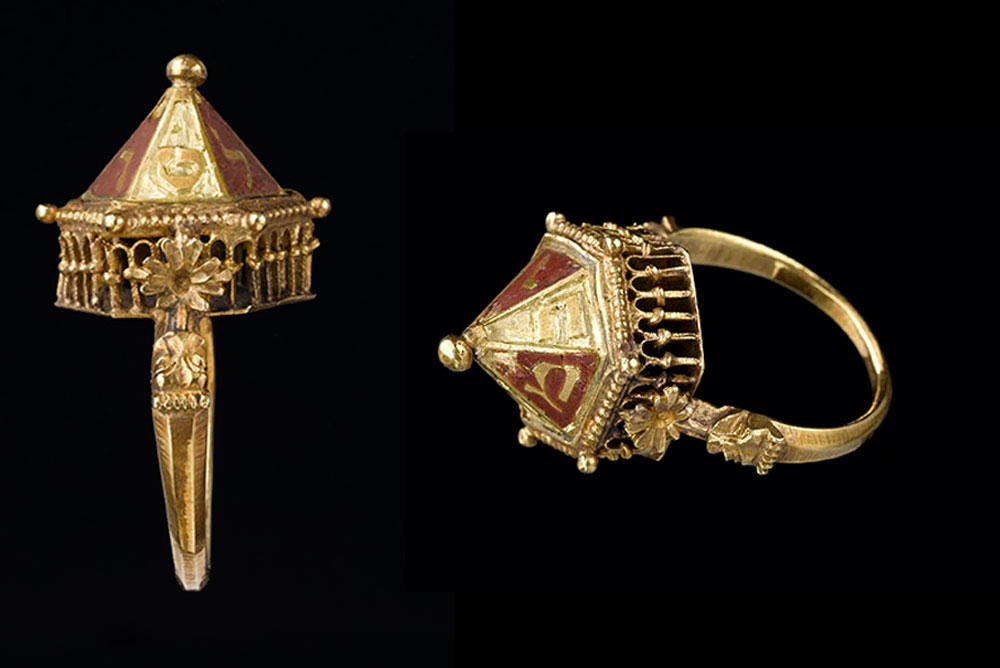
From the Musée de Cluny – Musée National du Moyen Âge in Paris, comes this wedding ring, the most technically accomplished example of goldsmith’s work in
the Colmar Treasure. Its miniature dome and supporting arches mimic the imagined form of the lost Temple in Jerusalem, metaphorically connecting that site to the newlyweds’
home in France. Hebrew letters spell out “mazel tov” (good luck) and are enhanced by red and traces of green enamel. The ring is thought to have been made on the Italian peninsula before 1349. It is part of the Met Cloisters’ “Colmar Treasure: A Medieval Jewish Legacy” exhibit, open through January 12, 2020.
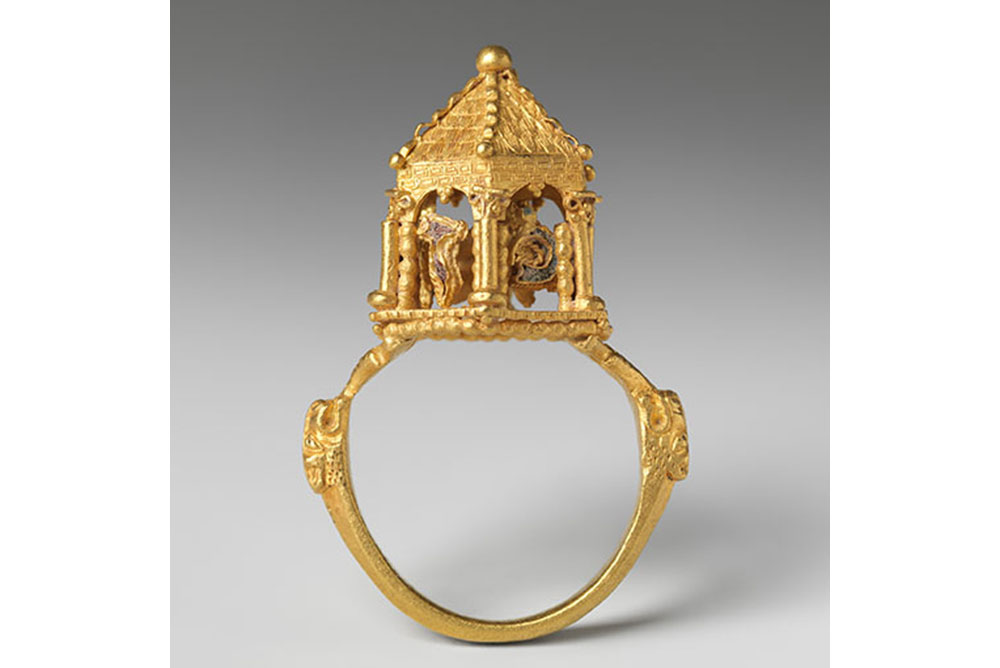
A ceremonial Jewish wedding ring, from a private New York collection, supplements the items from the Colmar Treasure on exhibit. It dates from the late 13th or early 14th century, and a description from the period explains that it would have been placed on the index finger of a Jewish bride during the wedding ceremony. Between the columns of the little “temple” are Hebrew letters spelling out “mazel tov.” The ring is part of the Met Cloisters’ “Colmar Treasure: A Medieval Jewish Legacy” exhibit, open through January 12, 2020.
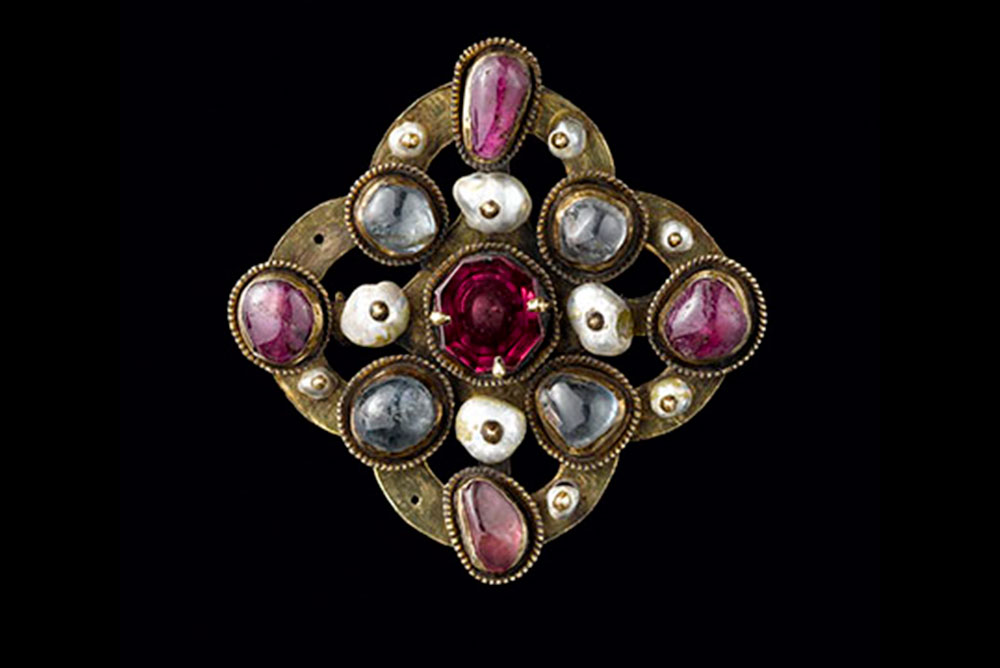
One item from the Colmar Treasure is this Jeweled Brooch, made of gilded silver, sapphire, garnet, ruby and pearl. The central garnet is the only stone that is faceted, a technique that originated in the 14th century–although it may be a later replacement. From the Met Cloisters’ “Colmar Treasure: A Medieval Jewish Legacy” exhibit, open through January 12, 2020.
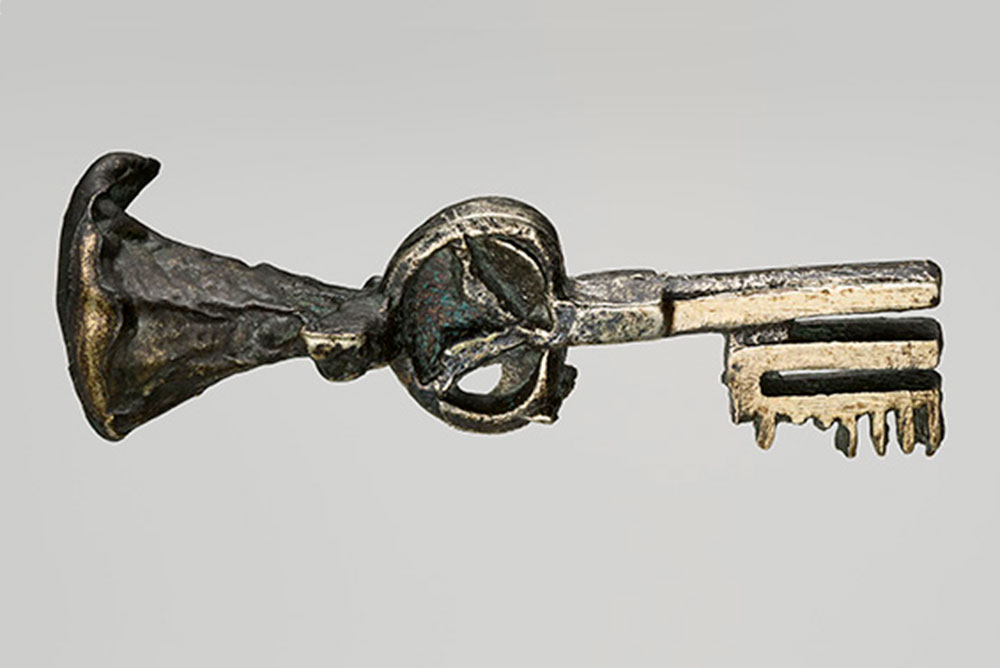
This silver key is part of the medieval cache called the Colmar Treasure. Because it was made of a precious metal, it could be carried or worn as an accessory outside the home during the Sabbath. From the Musée de Cluny – Musée National du Moyen Âge in Paris, it is part of the Met Cloisters’ “Colmar Treasure: A Medieval Jewish Legacy” exhibit, open through January 12, 2020.
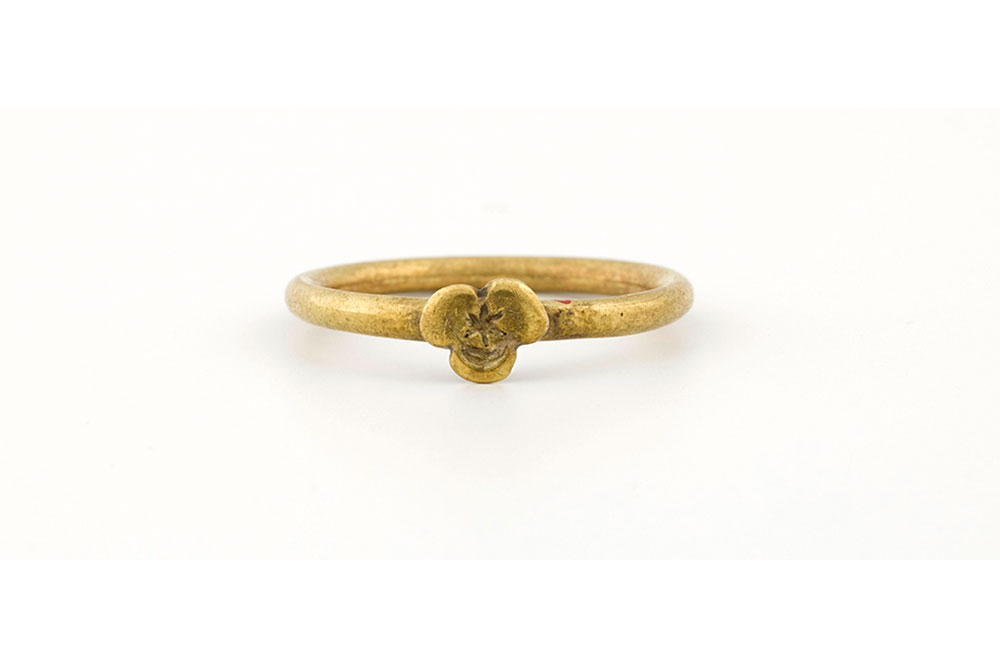
This simple Star and Crescent Ring is made of gold and thought to date from the 13th or early 14th century. It was one of several rings and sequin-like decorative studs found in the jewelry box discovered in Colmar in 1863. From the Musée de Cluny, it’s part of the Met Cloisters’ “Colmar Treasure: A Medieval Jewish Legacy” exhibit, open through January 12, 2020.
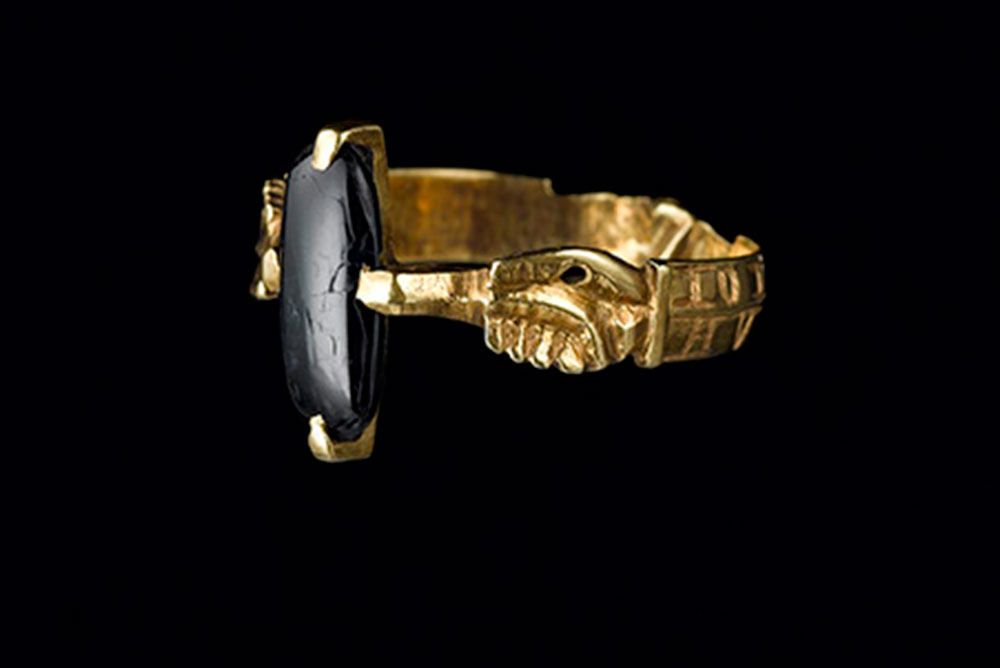
This onyx ring from the Colmar Treasure features clasped hands fashioned of gold, the motif still common today. Onyx, however, is highly unusual among medieval rings. A Hebrew treatise from 1290 links onyx with communicating with a departed loved one. From the Met Cloisters’ “Colmar Treasure: A Medieval Jewish Legacy” exhibit, open through January 12, 2020.
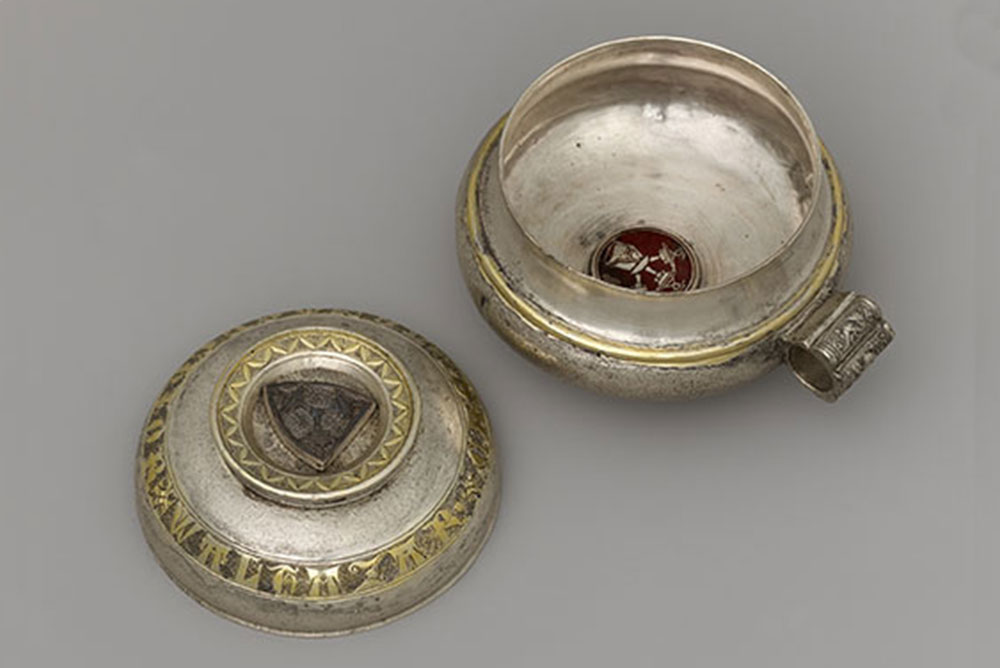
This silver and gilded-silver double drinking cup is from the Met Cloisters’ own collection and thought to have been made in Prague. The “three hats” design on the lid of the cup corresponds to the symbol of a Jewish family from Zurich. Circling the lid are the names of the Three Magi: In medieval Europe, both Christians and Jews invoked their names for good health. From the Met Cloisters’ “Colmar Treasure: A Medieval Jewish Legacy” exhibit, open through January 12, 2020.
